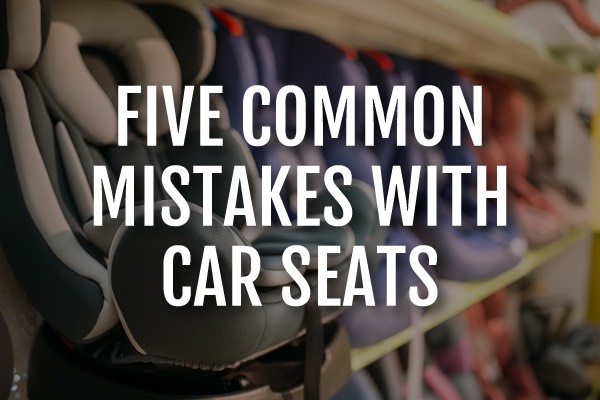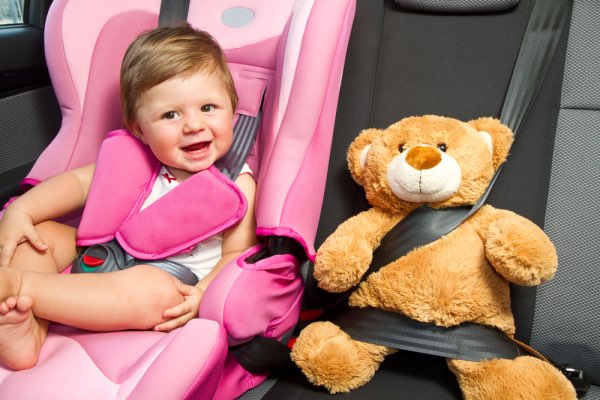
Children are one of the most vulnerable groups in our society. They are especially vulnerable to car accidents, with most children gaining serious injuries or even dying if they are involved in one. Car seats are designed to help protect and save young lives in the event of an accident by keeping them safely strapped in with surrounding padding, protecting them from impact damage.
However, injuries are still high among small children as parents unknowingly install car seats incorrectly, lowering their effectiveness and leading to deadly consequences. According to the Texas Department of Transportation, more than half of deaths among small children and serious injuries could have been prevented by placing children in the right size car seats and having the car seats installed properly.
To help make parents aware of the seriousness of this matter, the team at the Hernandez Law Group, P.C. has made this guide detailing the most common mistakes concerning car seats and how to solve each of them.
1. Incorrect Car Seat Installation
Harnessed car seats can be installed with either the seat belt or the Lower Anchors and Tethers for Children, also known as the LATCH. Both of these options are effective and safe, but parents sometimes believe that using both makes the car seat safer. This is not the case.
Your harnessed car seat should only be installed using either the seat belt method or the latch, but not both. Using both can cause the straps to interfere with each other, resulting in a loose install. Car seats should have less than one inch of movement from side to side and front to back.

It is also important to keep in mind that if you are using a LATCH, there are weight limits. Always check with your car seats and your vehicle manual to find out when you should be upgrading your seat to meet the changing needs of your child.
Finally, though a rear center car seat position is the safest, this may not be doable for some older vehicles. Don’t try to force a car seat into a position where it either doesn’t fit or the seat belts don’t match up with the buckles on the car seat. Remember, a good installation with a secure hold on the car seat is more important than a good seating position.
2. The Child Is Harnessed Incorrectly
Rear and forward-facing car seats each have their way of how they should be harnessed.
Rear-facing car seats should have the harness straps begin at or a little bit below the child’s shoulders.
Forward-facing car seats should have the harness straps come from above or at the child’s shoulders.
In both cases, the harnesses should be so snug that you are not able to pinch the harness’s webbing at the child’s collarbone. Each buckle should be secured on the harness as this helps keep the child secure in the seat. Pay special attention when buckling to ensure that there are no twists in the harness, as this can be uncomfortable for the child and make the seating situation less secure.
Additionally, each child’s crotch buckle location will be different depending on the type and size of the car seat, so always check the owner’s manual before use. The chest clip should also be securely fastened in the center of the child’s sternum.
Remember, as the child grows, this location will change. For example, on older children, this will be near the armpits, but on newborns, this is closer to the nipples.
3. The Child Is in the Wrong Size Car Seat
Children grow incredibly fast and at different rates, so finding a car seat that matches their needs can be difficult. Car seats come in a wide variety of sizes, prices, and types. It is important for you to choose the car seat that best fits your child, your vehicle, and can meet your budget. Keep in mind that, while it is common knowledge that car seats come in different weight limits, they also have varying heights.
Even though a car seat may claim to support a child until they are forty pounds, that isn’t true for everyone. If your child outgrows the harness and shell heights of the seat, the car seat won’t be safe or comfortable for your child. If you are ever having an issue finding the correctly sized seat for your child, TxDOT offers a free car seat check with their program Save Me With a Seat – just type in your zip code for the nearest location.
4. Introducing Your Child to Boosters Too Early
Whether it is from cost, convenience, or because the child is growing quickly, many parents try to transition their kids to boosters way too early. Despite the ages and sizes listed on the box, children aren’t ready for boosters until they can sit in their car seats correctly every time they get into them. This means no slouching when sleeping and no bending down to reach someone or something.
Most children aren’t able to reach this maturity in their behavior until about 5 to 6 years of age, and some children may not be able to perform this level of maturity until about 7. There is no need to rush your child into a booster – allow them to let you know through their behavior when they are ready.
With that said, whenever you are using a booster, make sure the shoulder belt sits firmly between the shoulder and neck. The lap belt should then sit on their lower hips and upper thigh, not across the belly.
5. Failure to Read or Follow the Car Seat Manual

It is tempting to install the car seat quickly, strap your child in, and go about your business, but you should always take the time to read and understand the manual first.
It is important that you know how to safely use and care for the restraints, what to do with them if you get into a car accident (such as replacing them), and their expiration dates. All car seats are different and, over time, may not meet the needs of your child or efficiently protect them in case of an accident.
Also, never disregard the extra items included with your car seat, such as cushions or head restraints. These items change the way the car seat is used, making it more effective. Also, never place your child in a car seat wearing bulky coats or costumes because these things can compress and injure your child or cause them to be ejected from the seat during an accident.
Were You or Your Child Injured in an Accident?
While avoiding these five common mistakes with child seats can increase the safety of your child, it doesn’t diminish the risks completely when it comes to an accident. If you are hit by a negligent driver and you or your passengers are injured, you may be entitled to monetary compensation for damages and medical expenses.
The caring car accident attorneys at the Hernandez Law Group, P.C. have the experience needed to help you get the compensation you deserve. Contact our team today for more information on our services or to schedule a free, no-obligation consultation to go over your case.
